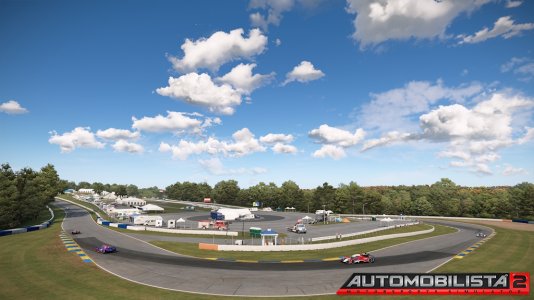That brings up a question I have: What does the wrench symbol mean?
I've thought it would make sense for it to indicate modified/unmodified controls, e.g. automatic transmission in a car that was manual, or traction control on in one that never had it. But maybe it's more mundane than that?
Also, the car symbol?
The wrench-symbol means the sim-racer was not using default-setup. You can just pick the ghost-setup if there is a ghost- and a wrench-symbol. If there is a ghost but no wrench symbol, he or she was using default setup.
About the initial post: If you shift h-pattern F1-cars with flappy pedals, I guess you loose 10 sec. alone through the shift-delay. The fastest way is using h-shifter with auto-clutch in AMS2 in those cars to left-foot brake, but without getting the shift-delay that's built in the game if using sequential.
After almost 8 years of sim-racing and the first three years almost just hot-lapping Nordschleife in AC I can tell, mastering the Nordschleife is more than managing it. You need to drive on the limit all the time using the optimal line in every corner and technique to get close to the best times or beat them. I got better around Nordschleife by practicing other tracks instead. The Nordschleife is IMO NOT a great teacher and especially modern GP-tracks like Hockenheimring or Silverstone do a better job for the driving-technique because some corner-combinations are awkward and unnatural and force you to think outside the box.
I've set some dozens 'WRs' in AMS2, but I'm not the talent to beat aliens probably half as old as me, but in AMS2 and rF2 I get close enough to tell that the lap-times are legit and there is no setup-BS that makes you faster. In rF2 there is more setup-BS than AMS2.
F1-cars are very tricky at exploiting their potential because the faster you drive them, the more downforce they produce, the more grip. This is convenient for beginners since there is less understeer and shorter braking-distances, but the learning-curve is much better with low to no-downforce cars. The typical F1-driver started with karting (spool), than Formula Ford/BMW (F Trainer) or Vee in the past (open diff) and it's IMO mandatory to be quick in those cars.
What I love about AMS2 and rF2 as well: Being quick at hot-lapping doesn't make you win races and could be even a handicap. I just had a LFM-race in rF2 around Nürburgring Endurance and managed to qualify 6th out of 25 while the pole setter was incredible 11 sec faster. After 8 race-laps I won and wasn't even overtaking anybody, just doing roughly my qualifying-time over and over again.
The problem with hot-lapping is not just the lack of risk-management. Fresh tyres allow a different driving-style (late apexing) that's quicker with fresh tyres, but prone to fail with tyre-wear kicking in. My apex (slowest point of the corner) is maybe a car-length earlier which makes me a bit slower, but I don't have to adapt my line during the race. There are people that can do both and win more races than I do, but most people can't. I was doing far more TimeTrials in the past and noticed that my race consistancy went down. And the pure pace is usually meaningless if you fail just once during a race.
The best way of learning AMS2 is watching real onboards and observing where and how they brake and what's the slowest point of a corner. This might not put you on P1 of the hotlap-leaderboards, but shouldn't be far off either.
 )
)









